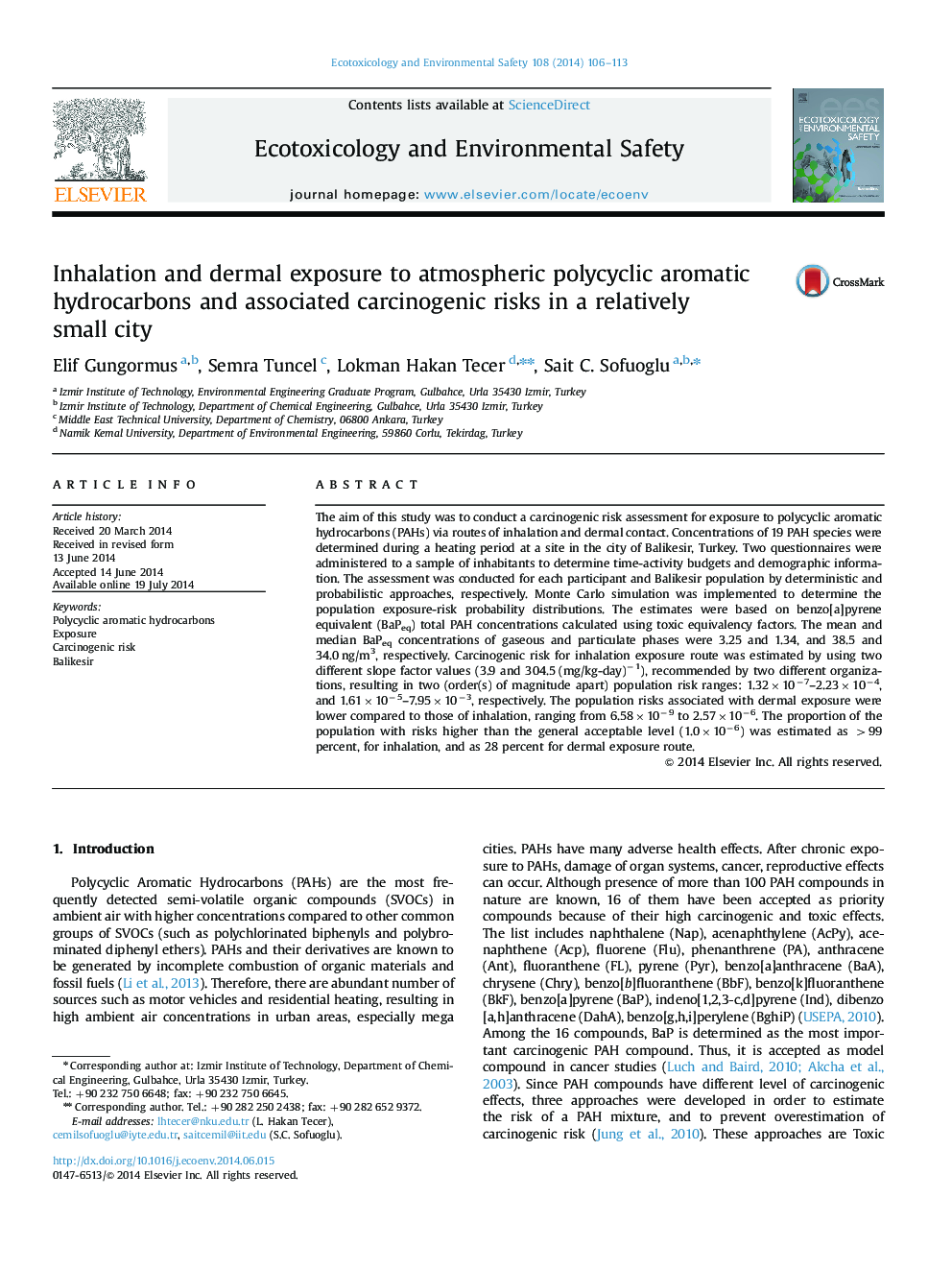| Article ID | Journal | Published Year | Pages | File Type |
|---|---|---|---|---|
| 4420118 | Ecotoxicology and Environmental Safety | 2014 | 8 Pages |
•Risks due to ambient air PAH exposure may be high even for a relatively small city.•Cancer risk potential of particle phase PAHs is higher than that of gaseous phase.•Risk associated with inhalation route is higher than that of dermal absorption.
The aim of this study was to conduct a carcinogenic risk assessment for exposure to polycyclic aromatic hydrocarbons (PAHs) via routes of inhalation and dermal contact. Concentrations of 19 PAH species were determined during a heating period at a site in the city of Balikesir, Turkey. Two questionnaires were administered to a sample of inhabitants to determine time-activity budgets and demographic information. The assessment was conducted for each participant and Balikesir population by deterministic and probabilistic approaches, respectively. Monte Carlo simulation was implemented to determine the population exposure-risk probability distributions. The estimates were based on benzo[a]pyrene equivalent (BaPeq) total PAH concentrations calculated using toxic equivalency factors. The mean and median BaPeq concentrations of gaseous and particulate phases were 3.25 and 1.34, and 38.5 and 34.0 ng/m3, respectively. Carcinogenic risk for inhalation exposure route was estimated by using two different slope factor values (3.9 and 304.5 (mg/kg-day)−1), recommended by two different organizations, resulting in two (order(s) of magnitude apart) population risk ranges: 1.32×10−7–2.23×10−4, and 1.61×10−5–7.95×10−3, respectively. The population risks associated with dermal exposure were lower compared to those of inhalation, ranging from 6.58×10−9 to 2.57×10−6. The proportion of the population with risks higher than the general acceptable level (1.0×10−6) was estimated as >99 percent, for inhalation, and as 28 percent for dermal exposure route.
